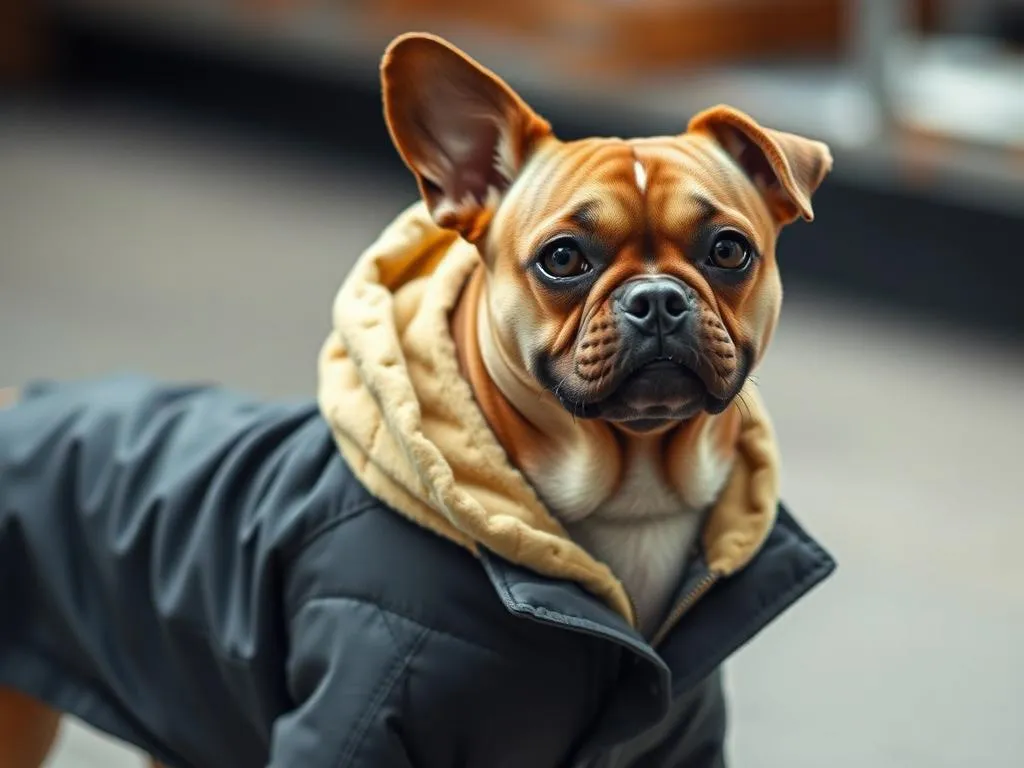
Introduction
The bond between humans and animals transcends the ordinary, often leading us to treat our pets as beloved family members. One manifestation of this relationship is the growing trend of dressing up our furry friends in various outfits. From cozy sweaters to flashy costumes, the pet clothing market has exploded in recent years. As dog owners, we often wonder: do dogs like wearing clothes? Understanding the emotional and physical implications of dressing our dogs is essential for ensuring their comfort and happiness.
Understanding Dog Behavior
The Canine Sense of Fashion
While we may delight in selecting the perfect outfit for our dogs, it’s essential to consider how they perceive clothing. Dogs experience the world primarily through their senses of smell and sight. Unlike humans, who are visually stimulated by colors and patterns, dogs may be more interested in the scents associated with the fabric. To them, clothing may not represent style or aesthetics but rather a new scent to explore.
Body Language and Clothing
Dogs communicate their feelings through body language. When introducing clothing, it’s crucial to observe their reactions. Signs of comfort include a relaxed posture, wagging tails, and playful behavior. Conversely, if a dog shows signs of distress—such as cowering, excessive scratching, or attempts to remove the clothing—it may indicate discomfort. Recognizing these signals helps pet owners make informed decisions about dressing their dogs.
Reasons for Dressing Dogs
Practical Reasons
Protection from Weather
One of the primary reasons for dressing dogs is protection from the elements. In colder climates, a well-fitted sweater or coat can keep a dog warm, preventing issues like hypothermia. Conversely, in hot weather, light, breathable fabrics can help keep dogs cool and protected from the sun’s harsh rays.
Medical Needs
In some cases, clothing serves a medical purpose. Post-surgery shirts or recovery suits can prevent dogs from licking their wounds, aiding in the healing process. These garments are designed to be comfortable while serving a functional role, showing that there are practical reasons for dressing our pets.
Social and Cultural Influences
The influence of social media and celebrity pets cannot be underestimated in the discussion of dog clothing. Pets like Boo the Pomeranian and Doug the Pug have amassed millions of followers, showcasing fashionable outfits that set trends for pet owners. Furthermore, cultural differences play a role in pet clothing preferences; in some cultures, dressing dogs is a norm, while in others, it might raise eyebrows.
Fashion and Individuality
For many pet owners, dressing their dogs is an expression of individuality. Just as we choose clothing that reflects our personalities, some owners enjoy picking outfits that align with their dogs’ unique traits. The pet fashion industry has seen trends evolve, from practical outdoor gear to haute couture outfits, allowing dog owners to celebrate their pets’ personalities through fashion.
Do Dogs Actually Enjoy Wearing Clothes?
Research Findings
Scientific research on dog emotions related to clothing is limited, but several studies suggest that dogs can experience a range of feelings based on their comfort levels. A survey conducted among dog owners revealed varied opinions about their dogs’ reactions to clothing; some reported positive experiences, while others noted their dogs’ resistance. It’s clear that individual preferences play a significant role in determining whether a dog enjoys wearing clothes.
Anecdotal Evidence
Anecdotal evidence from dog owners provides a more personalized perspective. Many dog owners report that their pets seem to enjoy wearing clothes, particularly when they associate the experience with positive moments, such as playtime or outings. Quotes from dog trainers emphasize the importance of understanding each dog’s personality; some dogs thrive in clothing, while others may find it constricting.
Choosing the Right Clothes for Your Dog
Types of Dog Clothing
Functional Clothing
Functional clothing includes items like coats, sweaters, and boots. These garments serve a specific purpose, such as keeping dogs warm during winter walks or protecting their paws from hot pavement.
Fashion Clothing
Fashion clothing encompasses costumes, shirts, and various accessories. While these items may not serve a practical purpose, they allow owners to showcase their dogs’ unique styles and personalities.
Selecting Appropriate Sizes
Choosing the right size is crucial for your dog’s comfort and safety. An ill-fitted garment can restrict movement and cause anxiety. Measure your dog’s neck, chest, and length from neck to tail to ensure a proper fit. Many brands provide size guides to help owners make informed choices.
Materials and Fabrics
The choice of materials matters significantly when it comes to dog clothing. Breathable fabrics like cotton or moisture-wicking materials are ideal for warmer climates, while thicker, insulated fabrics are preferable for colder weather. Additionally, considering a dog’s skin sensitivities is vital; some dogs may have allergies or sensitivities to certain materials.
Tips for Introducing Clothes to Your Dog
Gradual Introduction
Introducing clothing should be a gradual process. Start by allowing your dog to sniff the fabric and explore it at their own pace. Once they seem comfortable, gently place the clothing on them for short periods, gradually increasing the duration as they acclimate. Positive reinforcement, such as treats and praise, can help create a positive association with wearing clothes.
Monitoring Reactions
As you introduce clothing, pay close attention to your dog’s body language and behavior. Signs of discomfort, such as whining, attempting to remove the clothing, or hiding, indicate that it may be time to remove the outfit. Always prioritize your dog’s comfort over fashion.
Making It Fun
To make the experience enjoyable, incorporate playtime when your dog is wearing clothes. Engage in activities they love, like fetching a ball or going for a walk. This association can help your dog view clothing as a fun part of their routine rather than a restriction.
Common Misconceptions About Dogs and Clothing
Myth: Dogs Don’t Feel Cold
Many people believe that dogs are naturally equipped to handle cold weather, but this isn’t entirely true. While dogs do have fur coats, not all breeds are equally insulated. Smaller breeds, elderly dogs, and those with short fur can be especially susceptible to cold temperatures. Understanding your dog’s unique needs is essential for their well-being.
Myth: All Dogs Hate Clothes
The belief that all dogs despise wearing clothes is misleading. While some dogs may indeed resist clothing, many enjoy it, especially if they are accustomed to it from a young age. Individual personality traits play a significant role in determining whether a dog enjoys donning outfits.
Conclusion
In summary, the question of do dogs like wearing clothes is multifaceted and varies from one dog to another. As pet owners, it’s crucial to consider our dogs’ comfort, preferences, and individual personalities when choosing clothing. By understanding the reasons behind dressing dogs, monitoring their reactions, and selecting appropriate garments, we can enhance their well-being while enjoying the fun of pet fashion. If you have experiences or stories about your dog’s clothing journey, consider sharing them!









